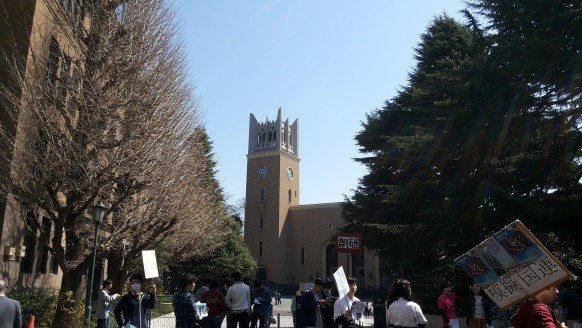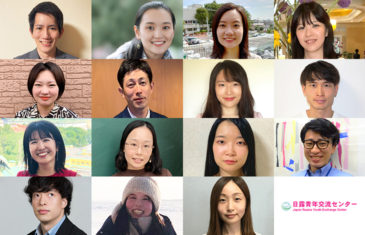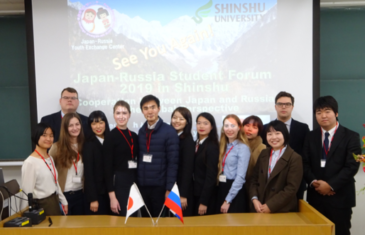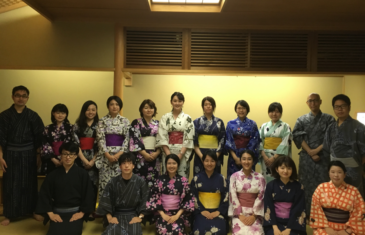-Воспоминания о пребывании-
-Researchers Diary-
(
2014 г.)
- Санкт-Петербургский государственный экономический университет
Анна Ковалева
I participated in the Kameoka Homestay Exchange Program organized by Kameoka International Exchange Association office on 28th of February–1st of March. The person in charge of this program, Yoko Hashi, with her colleagues organized not only staying in host family but also interactive events with other foreigners and Japanese citizens of Kameoka. Thus, we made wreath for Hinamatsuri Festival in the beginning of our arriving so we had opportunity to be acquainted with other people.

Wreath for Hinamatsuri Festival

Demonstration of traditional dresses
After staying in the host family, we jointed the World Festa on the second day of visit where we were showed traditional costumes and could try snacks from different countries. And one of the unusual and exciting activity of the Festa was possibility to try on costumes from countries participated in this event.
Moreover, in Kyoto I have visited Kyoto Higashiyama Hanatouro as one of the traditional illumination of the whole year round and answered to a questionnaire to tourists.

Illuminated Kiyomizudera Temple

Garden of the Shunkoin Temple
I also visited the special exhibition “Age of Rakuchu-Rakugai-zu (Grand View of Kyoto)” in the Museum of Kyoto. I was really admired by the evolution of the images. Even I underlined the connection between Japanese management and art in Kyoto. For example, I discovered for myself conservatisms in evolution of routines of management and art, attention to a particular moment as the important one equally with others, in other words, value of context.
Specially, I was invited by Mr. Franky S. Hotta to participate on 15th of March in excursion to Shinnyo-Do Temple organized by Kyoto Tour Guide Club, headed by Mr. Paul S. Satoh. It was a special day of Buddha’s Nirvana when some temples expose images of Buddha and gave “花供曽” for health of people. Also, I visited Kofukuji temple where I saw an image of Buddha’s Nirvana.
Additionally, I continued to joint master classed organized by “KI-ZU-NA” (student lounge at the Kyoto University). I participated in the meditation master class in Shunkoin Temple. We were explained the history of meditation and its role in modern societies, specially, in Japan, by reverend Takafumi Kawakami. We were taught by principles of everyday meditation and experienced in it. Then we were served by green tea matcha with sweets.
Besides this I visited the plum garden of Kitano Tenmangu Shrine where I was excited the beauty of nature.

Plum garden of Kitano Tenmangu Shrine

Otonaroid
Regarding topic of my project, I visited in National Museum of Emerging Science and Innovation (Miraikan) where Japanese know-hows are presented. I had a look on special rooms where researches were working while visitors looked on them. Also, I jointed the demonstration of Asimo (produced by Honda). I was very surprised to see a Japanese woman Otonaroid who looked like a real human. So, the question about the human and robots is still opened. However, I was astonished by floating orchids presented in the special exhibition.
Remarkably, I have seen agitation of students of Kyoto University and Waseda University (Tokyo) to join groups of interests of these universities. I think this practice can be also installed in the university where I work – Saint-Petersburg State University of Economics. I agree with my respondents who told that in Japan it’s important during studying to be a member of group. But I suppose that this is a special Japanese peculiarity to join at least one professional or hobby group from school until be an employer of a company.

Stands of groups in Kyoto University

Agitation for groups in Waseda University
In the whole, I continued my discoveries of Japanese culture for better understanding of management in Japan.
日露青年交流センター Japan Russia Youth Exchange Center
このページの文章、画像等一切の無断使用を禁止します。また、リンクを張る際は必ずご連絡下さい。
All right reserved, Copyright(C) Japan Russia Youth Exchange Center 2000
Связанные теги
Рекомендации
All right reserved, Copyright(C)
Japan Russia youth Exchange Center 2000-.












